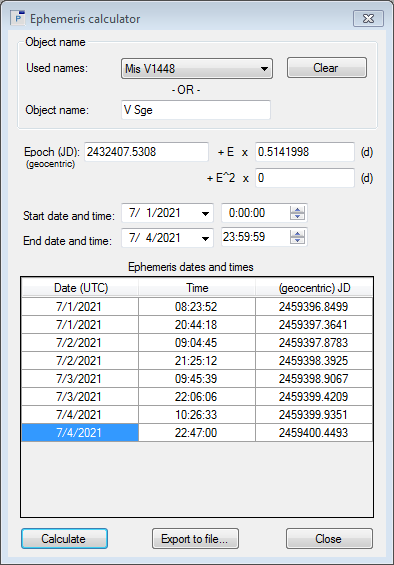- Select Ephemeris calculator in the Tools menu of the Desktop menubar to open the Ephemeris calculator. It consists of 4 sections:
- In the Object name section there's an empty field labeled Object name. Enter V Sge. The field Used names recalls the Object name you entered for each successful ephemeris calculation. It makes it more convenient to repeat calculations in the future. Click the Clear button to erase all entries in the Used names field.
- Epoch (JD): to calculate an ephemeris, you need to know the (geocentric) Julian date of the reference epoch, as well the orbital period of the system and (optional) secondary terms. These values can be found in literature. For V Sge, we enter 2,432,407.5308 as reference epoch in the Epoch (JD) field. The orbital period is 0.5141998 days, which we enter in the E field. We don't know the secondary terms, so we leave the E^2 value to 0.
- Start date and time: the start and end date and time specify the interval in which ephemeris calculations have to be performed. Enter 7/1/2021 as start date and 0h00m00s as start time. Likewise, enter 7/4/2021 as end date and 23h59m59s as end time.
- Ephemeris dates and times: press the Calculate button. This will generate the list of all (mid) eclipse times, displaying for each event the Calendar date (UTC), time and (geocentric) Julian date. Click Export to file to export the calculations to a text file.

|